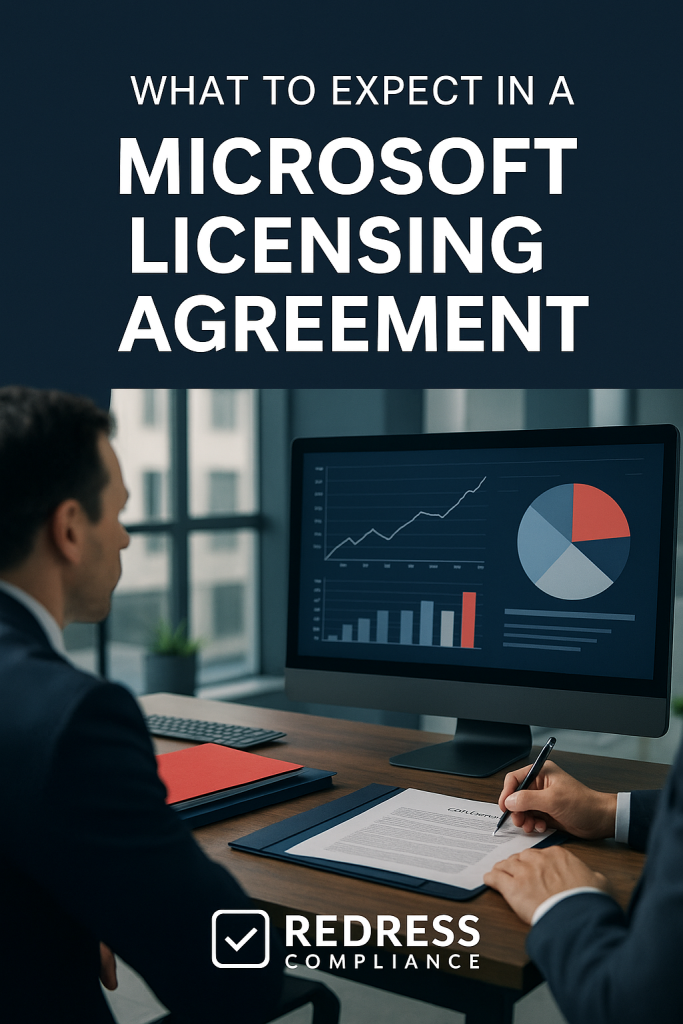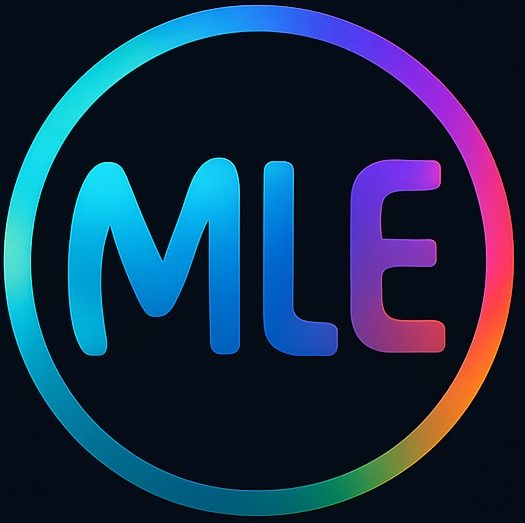What to Expect in a Microsoft Licensing Agreement

Introduction – Why Licensing Agreements Matter
Microsoft enterprise licensing agreements are complex, costly, and define your software spend for years. To avoid surprises, CIOs, CFOs, and IT managers must understand the structure, terms, and risks associated with these contracts.
Preparation helps prevent overspending and compliance issues when it’s time to sign or renew.
Core Elements of a Microsoft Licensing Agreement
Common elements in a Microsoft enterprise agreement include:
- Program Types & Term: The main licensing programs are the Enterprise Agreement (EA) – a 3-year contract with the best volume pricing (typically for 500+ users, Software Assurance included); the Cloud Solution Provider (CSP) – subscription licensing through a partner with flexible monthly or annual terms and no company-wide commitment; and the Microsoft Products and Services Agreement (MPSA) – a transactional agreement with no fixed term (licenses are purchased as needed). Each program involves a different level of commitment and flexibility.
- Software Assurance: Software Assurance (SA) provides upgrade rights, support, and training benefits. It’s automatically included in an EA and optional in others. SA adds cost, so weigh its benefits (continuous upgrades, support, training credits) against that cost for your situation.
- True-Ups: In an EA, you true-up annually – report any added licenses/users and pay for them annually. This lets you add licenses during the year and settle up later, but you cannot reduce license counts until the term ends. In CSP, you can adjust licenses more often (especially with month-to-month plans), but any licenses on a 1-year term are fixed until renewal.
Financial Impact of Microsoft Licensing Agreements
Your licensing model has a big budget impact. An EA gives predictable, fixed yearly costs and volume discounts, but it’s inflexible – you pay for a set number of licenses even if some aren’t used.
CSP lets you pay more closely for actual usage, which can save money if your needs decrease, but the trade-off is higher per-user costs and, if you commit to annual terms for a better rate, some lock-in.
Stable usage often favors an EA, whereas fluctuating needs may favor CSP to avoid paying for idle licenses.
Risks in Microsoft Licensing Agreements
Be mindful of these risks in enterprise agreements:
- Shelfware: Overestimating needs or buying broad bundles can leave you with shelfware – licenses paid for but underused.
- Lock-In: You’re bound to the quantities you commit for the term. If your workforce or usage drops, you still pay for the original number of licenses until renewal.
- Renewal Costs: At renewal, Microsoft might increase prices or remove discounts. Without protections, you could face a steep cost hike in the next term.
Negotiation Opportunities
Many terms in a Microsoft agreement are negotiable. For example:
- Benchmark Pricing: Compare costs of different options (EA vs. CSP, or Microsoft vs. competitors) and use those benchmarks to press for better pricing.
- Cap Future Increases: Negotiate a cap on price increases at renewal to guard against budget-busting jumps later.
- Usage Transparency: Request regular licensing reports or tools to monitor usage so you can anticipate true-up costs and avoid surprises.
- License Flexibility: Ensure you can mix license types. Not everyone needs the top-tier bundle – negotiating the option to assign cheaper licenses to some users can cut costs.
- Competitive Leverage: Let Microsoft know you’re considering other options. The possibility of moving some workloads away can motivate Microsoft to offer concessions or discounts.
What Enterprises Can Expect During Negotiations
Microsoft will likely push for a larger commitment. Expect pressure to adopt more products or higher-tier bundles, often accompanied by “limited-time” discounts to encourage a quick decision.
If you’re working through a CSP partner, they may include extra services like support, but core licensing rules remain standard. Some contract terms won’t change, so focus on negotiating prices and flexibility.
Microsoft might also suggest adding services (Azure credits, security add-ons, etc.) – take those on only if they fit your needs, since each addition raises costs.
Key Terms to Expect in a Microsoft Licensing Agreement
| Term | Standard Position | Buyer Risk | Negotiation Opportunity |
|---|---|---|---|
| Agreement Term | EA term ~3 years; CSP subscriptions can be 1-year or monthly. | Locked in during term – no adjustments if needs change. | Negotiate a shorter term or an opt-out clause (rare). Or keep some licenses on month-to-month plans for flexibility. |
| Pricing & Discounts | Volume discounts for larger commitments; prices fixed during term, but reset at renewal. | If usage drops, you still pay for the committed volume. Renewal could bring price hikes without protections. | Secure the best discount upfront and include a renewal price cap to limit future increases. |
| True-Up | Annual reporting of added licenses with payment for any overuse; no true-down until renewal. | Unplanned expense if usage grows beyond expectations; no refund for unused licenses until term end. | Track license usage to forecast true-ups. Negotiate a grace for minor overuse or an option for mid-term adjustments. |
| Reduction Rights | No reducing license counts mid-term (EA or during a yearly CSP subscription). | Paying for unused licenses if you overestimated or downsized during the term. | Consider a subscription EA (allows adjustment at renewal) instead of a fully fixed count. Keep some licenses on monthly terms to enable downsizing if necessary. |
FAQs
What’s included in a Microsoft Enterprise Agreement?
It typically covers all Microsoft software your organization needs under one contract – usually including Windows, Office/Microsoft 365 apps, and relevant server or cloud services – with Software Assurance for those licenses.
Can I reduce license counts mid-term?
No. When you sign an EA, you commit to a set number of licenses for the whole term and cannot decrease that quantity until renewal. Similarly, any annual cloud subscription (like a 12-month CSP plan) locks you in for that period. You can add licenses mid-term if needed, but must wait until the end of the term to reduce them.
What happens at the end of a 3-year EA?
You can either renew or let it expire. If you renew, you negotiate a new agreement (possibly adjusting license counts, products, and pricing) for another term. If you don’t renew, with a perpetual EA you still own and can use the licenses you acquired, whereas with a subscription EA, your right to use the software ends when the term expires unless you shift those users to a new plan or purchase new licenses elsewhere.
Do perpetual licenses still exist?
Yes. Microsoft continues to offer perpetual (one-time purchase) licenses for on-premises software like Windows Server, SQL Server, or the standalone Office suite. You can purchase these through volume programs, such as MPSA, or from authorized resellers. However, many of Microsoft’s newer offerings (for example, Microsoft 365 cloud services or Dynamics 365) are only available via subscription, not as perpetual licenses.
How can I ensure compliance under a licensing agreement?
Keep a detailed inventory of your Microsoft deployments and user accounts, and regularly reconcile it against your purchased licenses. Use Microsoft’s admin portals or asset management tools to monitor license assignments and usage. Conduct periodic internal audits (for example, before a true-up) to catch any licensing shortfalls or excesses and correct them. Staying proactive and organized is the best way to remain compliant and avoid surprises during a Microsoft audit of your environment.
Five Expert Recommendations
- Audit usage before signing: Review your current Microsoft license deployment and usage. Knowing what you have – and what you actually use – will prevent overbuying and give you data to negotiate with.
- Compare costs across models: Evaluate the multi-year cost of an EA vs. a CSP (and other licensing options) for scenarios where your user count grows or shrinks. Choose the most cost-effective route and use those numbers to strengthen your case in negotiations.
- Secure price protections: Push for contract terms that shield you from steep cost increases, especially at renewal. Negotiate to carry forward your discount or cap any price hikes. Getting these assurances upfront will save you money later.
- Right-size your licensing: Don’t automatically buy the most comprehensive (and expensive) bundle for everyone. Tailor licenses to needs – give premium licenses only to those who truly need those features, and assign standard licenses to others. This keeps costs down by avoiding the payment for capabilities that no one uses.
- Leverage timing and alternatives: Plan to negotiate when Microsoft is most motivated (end of quarter or fiscal year) and mention that you have other options (competitors or alternate solutions). This approach maximizes your leverage to secure better terms and pricing.
